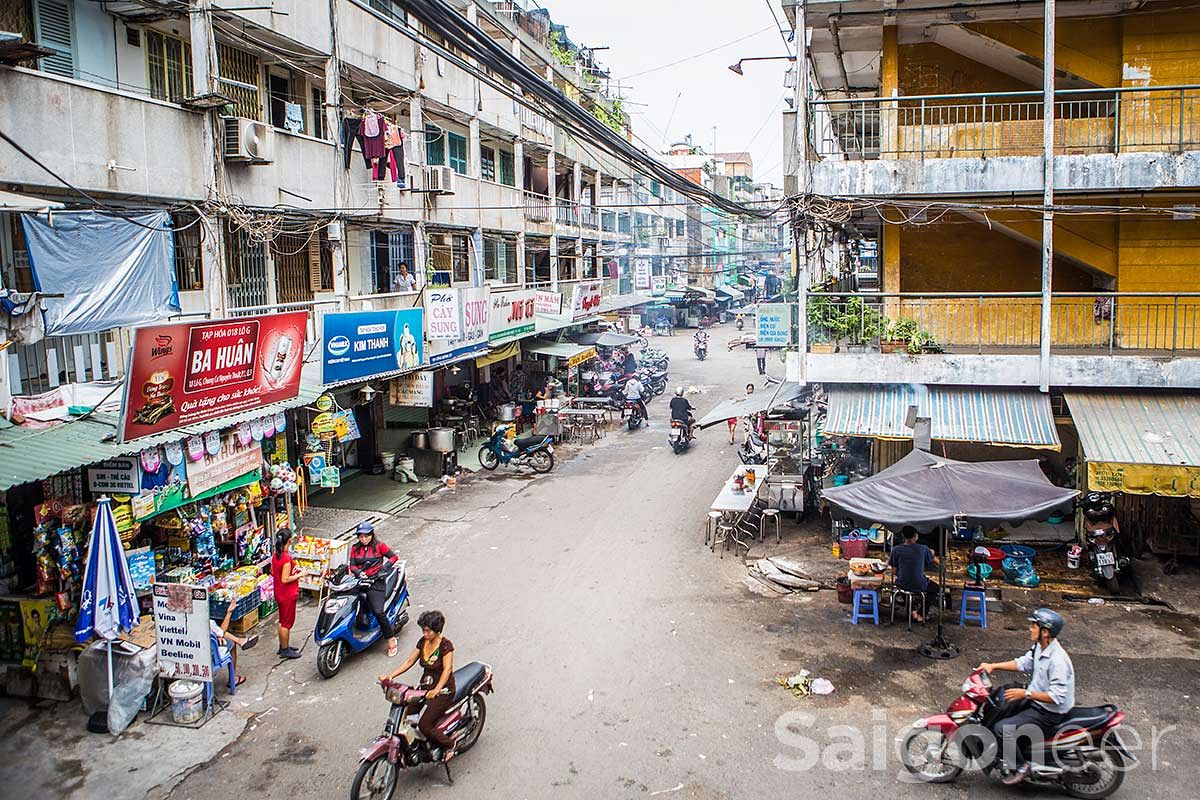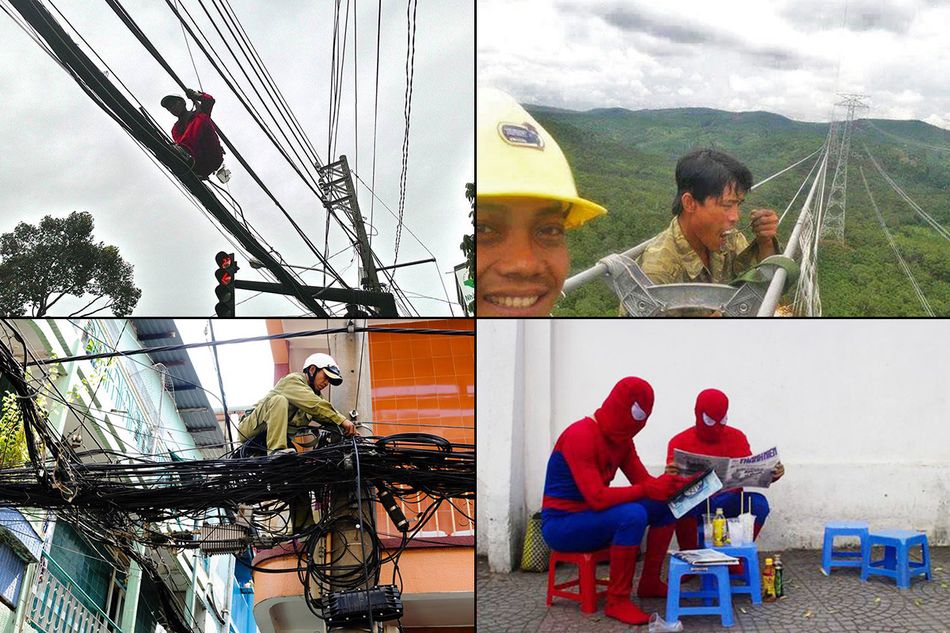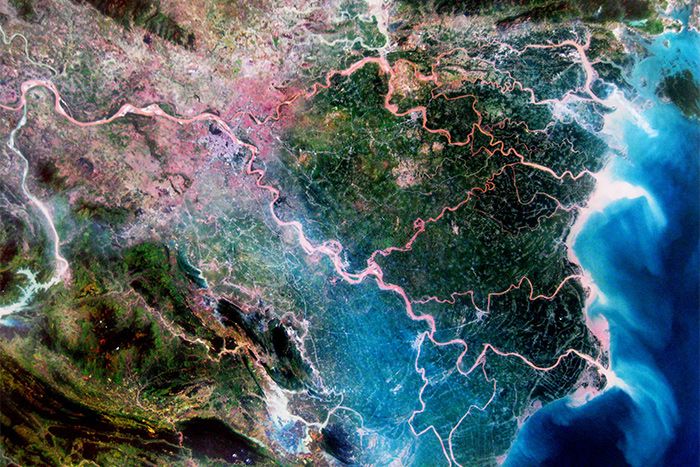“A city is enriched by accumulation over generations. Accumulation incorporates destruction but keeps enough fabric to retain cultural identity, while obliteration erases everything including the cultural fabric.” (Hoanh Tran)
Related Articles:
- Date With The Wrecking Ball: Ba Son Shipyard
- Hà Nội: CAPITAL City - Architecture & Housing
- Experts: Saigon has Lost 56% of its Historic Buildings in 10 Years
News of bulldozed residential buildings, of public spaces replaced by shopping centres and, of course, of historical sites being either forgotten or demolished are all on the daily agenda in Vietnam, particularly in Saigon and Hanoi.
This is by no means a new trend and it is not only a local concern. In 2011, the British newspaper The Independent, for instance, published an article with the ominous title The Fall of Saigon – by demolition.
What has followed is a polarised situation that sees modernisation and national interest on one side and preservation of heritage and historical buildings on the other. The manifestation of the latter has been vividly displayed through art - in photo books, installations and painting exhibitions.
Other critics of Vietnam’s recent urban development have often pointed to China (Beijing, in particular) and Singapore as examples of the irreparable damages done in the name of modernization.
However, up to this point, artists have mainly focused their attention on aesthetics and history - the artistic value and historical importance of old buildings. Few have tapped the commercial and political undertones of the new urban plans.
The exhibition In Situ, displayed last month at Galerie Quynh by the Saigon-based architectural duo Archie Pizzini and Hoanh Tran of HTA + pizzini, is the first study we’ve seen that examines the social impacts of modernization as well as the need for architectural improvements.

Image courtesy of the artists.
The inseparability of the two is clear when we begin our interview with Hoanh Tran, “for us the social fabric and the urban fabric are strictly connected. The social fabric creates and the urban fabric supports. If you demolish the urban fabric too quickly, you destroy the social one. We think we should maintain both fabrics.”
Through photographs with accompanying texts and a map installation, In Situ primarily focuses on Saigon (with a sprinkling of shots taken in Hanoi and Sapa). “What we want to prove through our photos is that what exists in Vietnam already works but Vietnamese are fed the idea that what exists in the country is obsolete and should be replaced.”
The main goal of Pizzini and Tran is not to oppose the urban evolution of Saigon, but to look closely at the way it is happening, “we are not against changes but everything should evolve at its own pace. If the transformations occur over 30 or 40 years, then people have time to adapt. What we have seen, instead, are situations where 150 families have been displaced within a short period of time to make way to new developments. The involvement of the community is essential but it is not included in the decision process,” explained Tran.
Buildings and urban areas do not simply serve an aesthetic purpose, they also embody social changes and have a direct impact on how citizens live their daily lives. “What we are seeing in Saigon is the rise of negative social spaces because they can only be accessed by one small social group,” explained Tran while discussing the proliferation of luxury flats and shopping centres.

The demolition of The Eden building in favor of Vincom B is one example of how Saigon's social fabric is being torn in the name of modernity. Photo via Vingoup.
For their photographic work, Pizzini and Hoanh have not chosen heritage or architectonically stunning buildings, but ordinary spaces and areas that are imbued with historical connotation and play an important role in the lives of Saigon’s residents.
If one had to summarise the fascination with Saigon’s cityscape, it would be fair to say that it derives from its unique and complex layers of texture that have accumulated during the city’s short life, a result of influences from four different major cultures and individual input from its citizens.
Until recently, Saigonese applied (often unauthorised) modification to courtyards, staircases and old buildings’ façades. These modifications have created spaces (apartments, enclosures, shops etc) that did not exist before. The apparent chaos resulting from these modifications is what distinguishes Saigon from any other place on a purely aesthetic level. But from a social point of view, they came to life to fulfil a spatial need in the practical daily lives of its inhabitants.
"All this produced spaces so improbable that I imagined no designer capable of conceiving them.” (detail from “The City”)
A particular interest for Pizzini and Tran is the evolution of the hems, which have been excluded from Saigon’s master plan and therefore may be completely eradicated in the future. “The hem is the place where you find your local food market and your trusted xe om who will probably take your kids to school and so on. Communities rely on it but the new urban fabric does not fit with the existing social fabric.”
“There is a real danger that we will lose a lot and we should look at places like Singapore where now they regret the changes they have made in the name of modernity.”
When we asked him whether, in his opinion, Vietnamese realise that even their ordinary streets are unique and represent, through their patchwork houses, shops, street restaurants and street vendors, more than simply the look of the city, Hoanh commented that local people may not yet recognise the value and beauty of these spaces, probably because for them, they are “ordinary” and most individuals do not have experiences that allow them to compare Saigon and Hanoi to other global cities.

An old gate in Hanoi's historic district. Photo by Anemi Wick.
However, he reckons that there is a group of people actively interested in what has been happening to their city, “a lot of young Vietnamese into architecture are aware of the heritage value probably more than the old generation. This can be seen in the small coffee shops that have been opened in old buildings where they are trying to embellish them.”
We wondered if these accelerated developments in the name of modernization are propelled by a cultural or political desire to break away from Saigon’s history, “there is some truth that the new developments might come from a desire to break away from the past but I believe that most people think in practical terms. They might think too far ahead and they believe that high-rise buildings will take Saigon to the same level of other cities.”
In the installation “You Are Here,” aerial maps of Saigon during the centuries are placed on see-through panels to create a timeline, showing the various evolutions of the city from the 1790s to the present. Small photographs depicting street vendors, cafes and roads are placed between the map panels, “we should look at the city from the top-down but also from the ground level,” said Hoanh, “for example, the current idea of “civilised” society implemented by removing street vendors and cyclos is another example of not looking at the city structure from the ground. Why are we getting rid of our cyclos while New York, for example, uses them now?”

Hoanh, who has also worked in the National Gallery of Art’s conservation department in Washington D.C and holds Master’s degree in Historic Preservation from Columbia University in New York, suggests that we should look at other cities’ development projects to improve liveability in Hanoi an Saigon while still preserving the old layers. “Many other cities have dealt with this and they have stricter regulations than in Vietnam. The first obvious step in identifying which sites to preserve is to look at the city’s landmarks. The second is the historical district, in which normally the interiors of the buildings can be modified but the exteriors cannot. Ultimately, the other areas can be amended by architects and planners that evaluate each area individually.”
The decision of displaying In Situ at Galerie Quynh was also intentional. The current Dong Khoi art space has a personal connotation for the duo since they designed it, but also because it metaphorically represents the way they look at the city, “it was a challenge because we designed it for other artists to display their work. We tried to accentuate the idea of multi-frames to look at the city from the gallery’s entrance doors, to the window overlooking Dong Khoi. So, when we worked on our exhibition, it became a show about the city within the city, which in a way, is how we see Saigon: through the accumulations of layers.”














